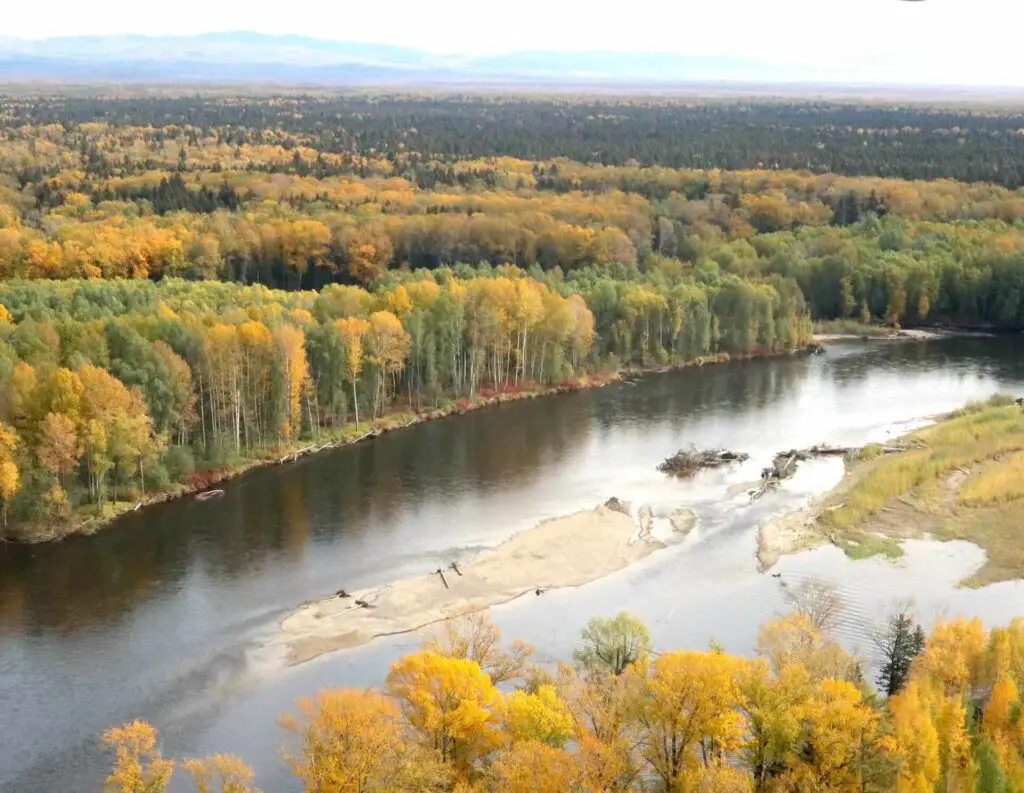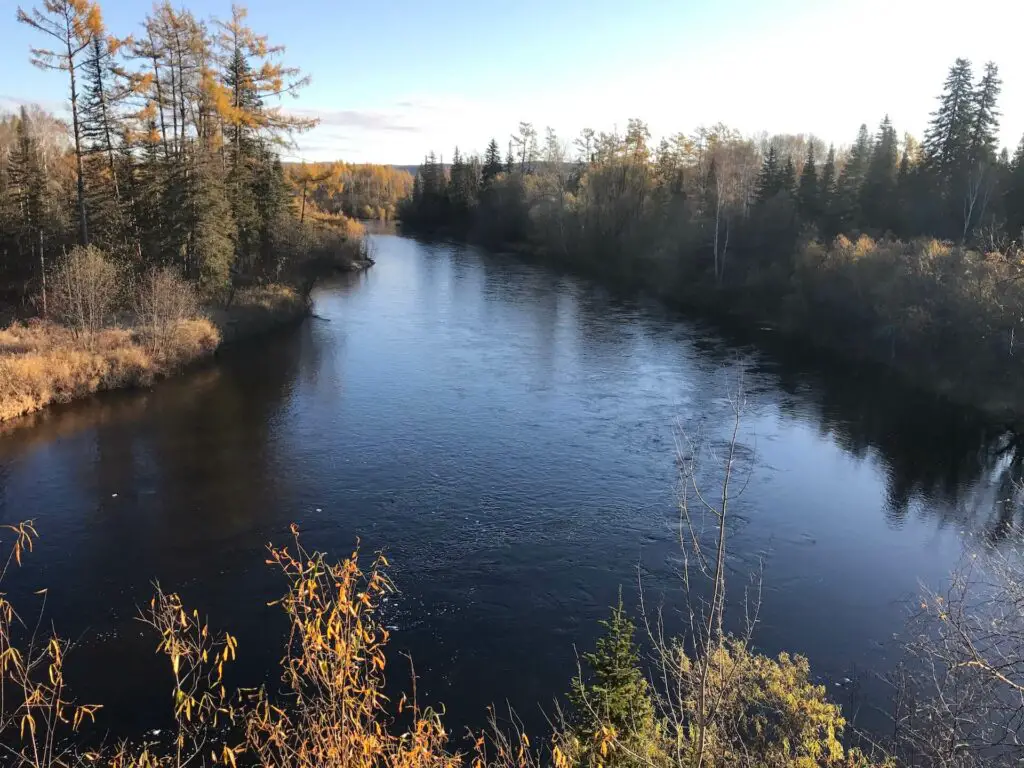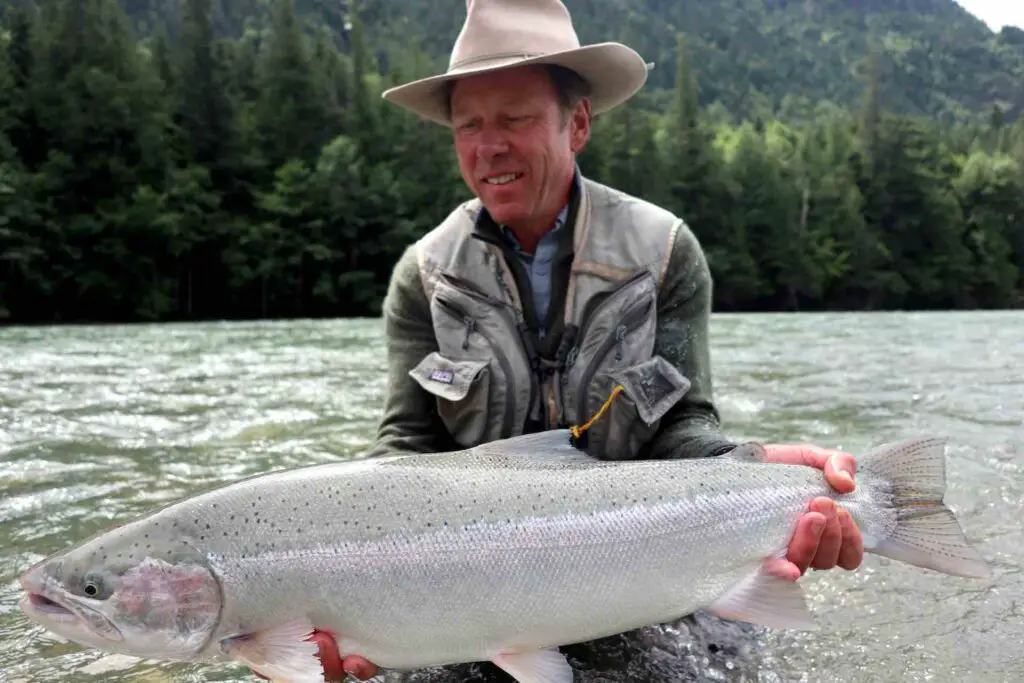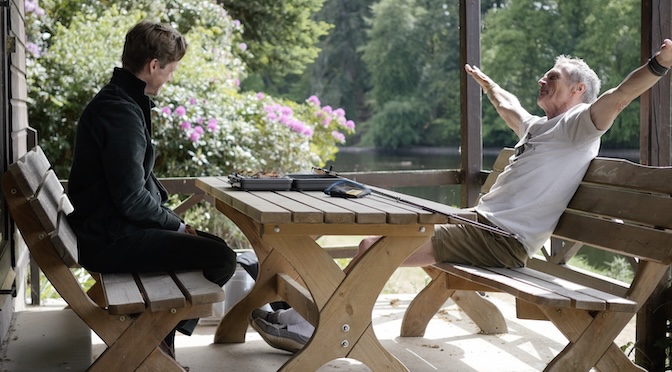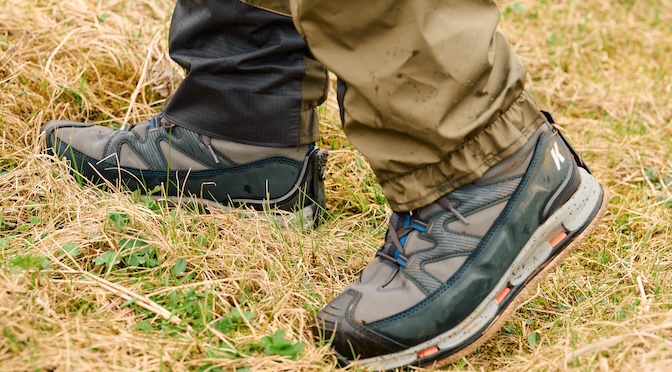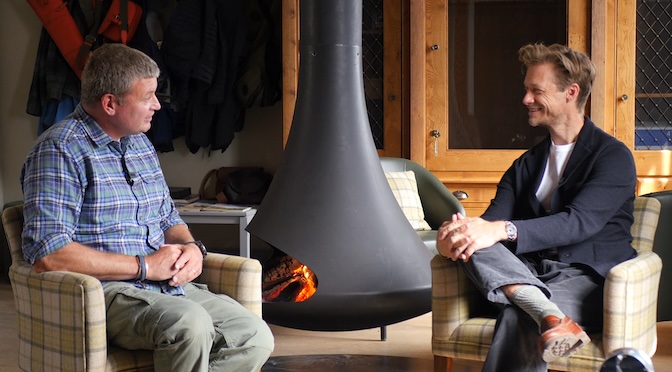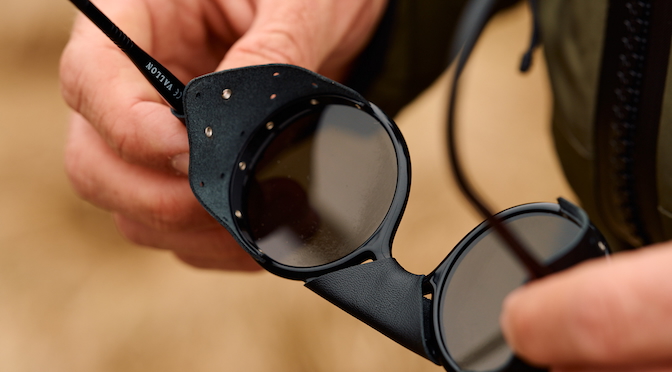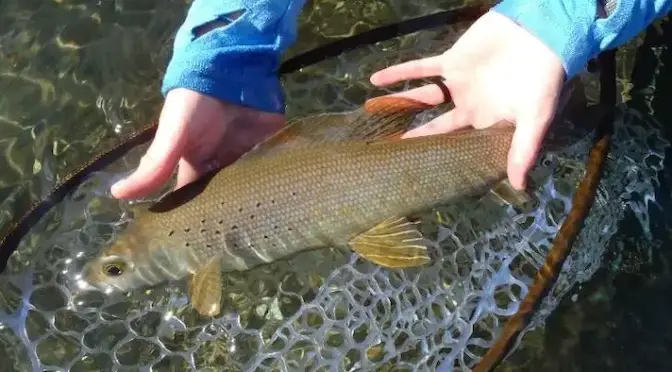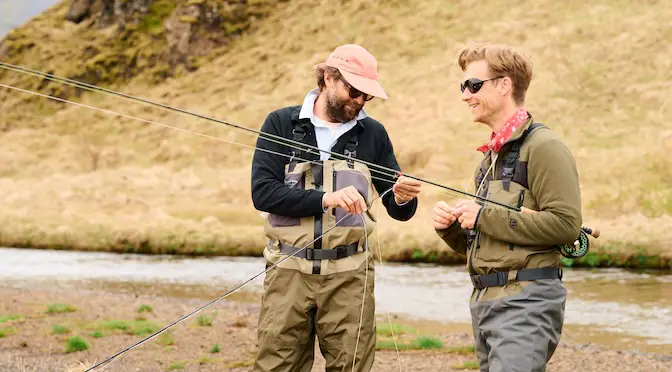Last updated on January 9th, 2024.
- Wading Wisdom #13 – Simon Gawesworth - July 7, 2025
- On the Water with the Korkers Bantam Lite - June 26, 2025
- How to Find Trout in Rivers & Streams Anywhere - June 13, 2025
For more than two decades the Wild Salmon Center has been fighting to protect wild fish from the Pacific Northwest to the Russian Far East.
We talked to the organisation’s CEO, Guido Rahr, about protecting habitats across borders, giant Taimen in the Russian Far East, and the challenges of saving wild fish in the future.
The geographical area of your work spans from the Pacific Northwest across Canada and Alaska all the way to the Russian Far East. How did you achieve that?
We looked at the challenge of salmon conservation and we decided to do two things. The first one is we’re going to look at the whole range of Pacific salmon because it’s one broad ecosystem. Almost one continuous shoreline really from Japan to Northern California. The second decision we made was to not target the most endangered salmon populations and rivers.
Instead we decided to target the ones that were the strongest remaining salmon ecosystems in each region of the Northern Pacific Rim. And the reason we decided to target the “last best” or what we call the strongholds is because it will be much easier to protect them in the long run than it will be to restore them once they’re severely damaged.
You started with a vision about 20 – 30 years ago. To what degree has that vision turned into reality?
It’s been really amazing. I had an epiphany in the mid-1990s. A vision of an archipelago of protected watersheds that extended from the Russian Far East to Northern California. It was crystal clear that there was an opportunity to do that. But it would take building real partnerships with people in Russia, Alaska, British Columbia and the Pacific Northwest. We stayed focused on that idea. It’s been about 20 years of just very carefully building conservation programs in each of those places. We added new strongholds like pieces of a puzzle.
We at the Wild Salmon Center got a little bit better each year at doing this and we learned as we went. It’s beginning to add up to something. I think something that will last beyond my lifetime.
What did your process look like out in the field?
We realized that there were really three things we needed to do in each place. First, to protect as much habitat as we could before it was lost. We do this by helping to establish parks and protected areas and land use regulations. The second thing we realized is we needed a separate set of strategies for wild salmon and to keep fish hatcheries from expanding and to allow enough fish back into the rivers to spawn. The third thing we realized was really a breakthrough. We realized that we needed to build and to strengthen local organizations in each place. That was better than creating local chapters of our own group. We needed to give local people the power, the money and the science. This enables them to fight to defend the land, the water and the fish. They fight harder than anybody.
Those were the three pieces and we stayed focused on that. All of this is adding up: we have secured the protection of over 3 million acres and thousands of river miles of protected habitat. We have reformed salmon and steelhead fisheries across the Pacific Rim. Together with our partners we have worked to defeat hydroelectric dams, large scale mines and a large liquefied natural gas plant proposed for the mouth of the Skeena River in British Columbia. We have also raised well over a 100 million dollars for conservation. Much of that is going to local partners.
The last piece of the puzzle for us is to learn how to build deep relationships with indigenous groups in each stronghold.
We’ve always worked with indigenous groups in each of the places. We’ve started looking at it more systematically recently. We found that there were 20 nations and tribes of indigenous people in our strongholds in Russia, Alaska, British Columbia and in North America. Their goals are often the same as our goals. So now we’re asking ourselves: How can we work better to support them and have deeper partnerships with them for wild salmon? Just recently our board voted to bring Dr. Tataina Degai, an indigenous scholar from Kamchatka onto the board of directors at the Wild Salmon Center. Dr. Andrea Reid, an indigenous fisheries scientist and conservation biologist from British Columbia joined the board as well.
What is Russia’s incentive to protect so much habitat in Kamchatka?
The Russian far east is the last major wilderness along the Northern Pacific Rim. It’s very sparsely populated. You can fly a helicopter all day without seeing a road or any sign of human life. But it is like the wild west where there’s rampant illegal poaching on the rivers for salmon. And there is growing pressure from China to log the pristine old growth forests.
Russia has one of the oldest park systems in the world. They’ve got very strong scientific leaders. They have good environmental organizations in the Russian far east with very courageous leaders. And now we’re seeing the emergence of sport fishermen and conservation leaders in Moscow. They have created a group called the Russian Salmon Association. They are now becoming more engaged in these questions of conservation. And so Russia has set aside millions of acres of habitat on stronghold rivers. It is one of the most ambitious salmon habitat protection efforts ever.
But It’s a race right now to move some of those rivers into protected status before Chinese backed logging companies move in and cut the trees down. We’re in a critical window of time.
You just talked about key habitats. There is also the concept of key species. What is the importance of those?
Forty percent of the world’s wild salmon come from the Russian far east. It’s a global food security issue. Kamchatka has all the Pacific salmon plus Asian Masu salmon occurring together in the rivers. The Russian far east has a population of giant Taimen. They grow large enough (up to 120 lbs) to feed on adult chum salmon. So from a biodiversity and bio productivity standpoint few people understand how important the Russian far east is. So it is important to help the Russians to not screw it up — Like we did in Europe and the United States.
One of the most fiercely debated topics of the last month was Pebble Mine. What implications does the recent decision to stop the project have?
In August the Canadian mining company Northern Dynasty was expected to receive a permit from the US Army Corps of Engineers. The plan was to move forward with one of the largest open pit gold mines in North America. It would have been located in the headwaters of Bristol Bay. It would have created billions of tons of toxic waste just upstream from the single most important system of salmon rivers in the world. The rivers of Bristol Bay produce up to 60 million salmon a year.
The mining company proposed to store billions of pounds of toxic tailings upstream from these rivers and lakes. The plan was to store it behind an earthen dam – which would be there in geologic time — it would never go away. It was also located in one of the most earthquake-prone areas of the Pacific Rim. So this was singularly the worst conceivable idea. It was just a spectacularly terrible idea. We’re spending hundreds of millions of dollars to restore salmon in the western United States and at the same time we’re going to let a Canadian company build a toxic mess in the headwaters of the world’s most productive salmon ecosystem that we will probably end up having to clean up some day.
The Wild Salmon Center was able to recruit and organize prominent Republicans to step up and reach out to the Trump Administration. And so these Republicans which include Johnny Morris, the CEO of Bass Pro and Cabelas’ and Nick Ayers, the former Chief of Staff for former vice president.
And so this wave of Republicans and fishing and hunting organizations became involved and went to the White House and said “Don’t do it”. The White House became concerned, and people inside the regulatory agencies that were working on the project started to look more carefully at the science. Then the Alaska Army Corps of Engineers, for the first time ever, denied a permit for a large-scale mine in Alaska. That was a massive victory, especially with the Trump Administration. It was very unusual for them to do something like this.
The denial of the permit for the mine was an important victory,, but we won a battle and but not the war. Bristol Bay is still vulnerable to another proposal from another mining company. And so now we and our Alaska partners including the United Tribes of Bristol Bay, are reaching out to the Biden Administration and the Alaska Senators to work on a plan to permanently protect Bristol Bay. Let’s start with using the EPA to use its powers to prevent future mining in the basin.
What do you think is going to be the biggest challenge in your work at the Wild Salmon Center in the next 10 years?
What I am most concerned about are three things. The first are the impacts of climate change. We’re heating up our rivers. The rivers in the southern and middle parts of the range of wild salmon are being affected by warm water temperatures and reduced instream flow.. Ocean warming and acidification is another related issue.
Secondly, the projected doubling of the global middle class between now and 2035. Especially as Asian countries move into the middle class – which is a sign of progress – but also will dramatically increase demands they have for clean water, fish protein, gold and timber. What that means for us is more forest destruction, overfishing, hydroelectric dams, large scale mining, and competition for clean water. With the impacts of rapidly increasing demand plus globalization it’s going to be hard for us to protect these watersheds.
The third thing that I’m worried about in the Pacific Ocean is the effects of massive salmon hatchery programs in Alaska and in Japan. They are pumping so many hatchery fish—billions — into the North Pacific that we’re beginning to see other salmon runs declining because the hatchery fish are eating such a large share of the zooplankton that other species from sockeye salmon to seabirds are not getting enough food.
We’re beginning to see seabird die-offs because there’s so many hatchery pink salmon in the ocean. Some of the wild runs are beginning to decline because they’re fighting over a limited marine “pasture”. Few people are aware of this ocean crowding issue, but the phenomena is called “tragedy of the commons”. The solution will be international agreements on the number of hatchery fish that are allowed to be released into the ocean. But it won’t be easy.
Thanks a lot for the interview, Guido.
For more information visit the organisation’s website
Read the book STRONGHOLD by Tucker Malarkey to learn more about the work of Guido Rahr and the Wild Salmon Center

